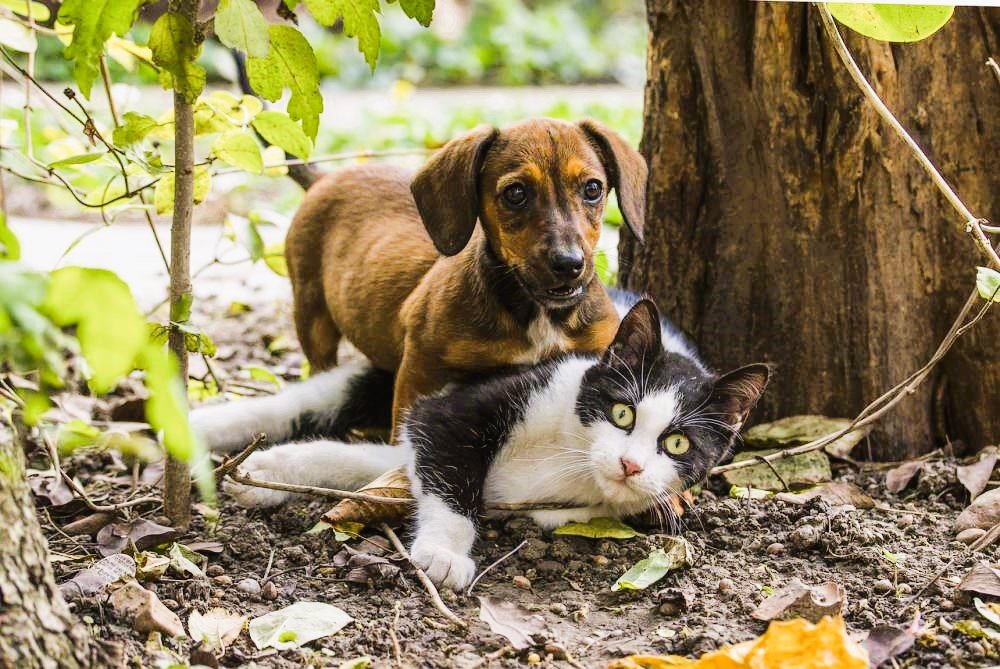Introduction
Pets are not just animals — they are beloved members of our households. Dogs and cats, just like humans, can be afflicted with all kinds of things but, since they can’t tell us they feel bad, it’s up to owners to pick up on the warning signs. Knowing common symptoms of illness can help ensure your pet gets the medical attention it needs sooner rather than later.
Understanding Pet Health
Awareness: Early Recognition of Symptoms
Most pet illnesses can be well-managed if detected promptly. Being aware of signs of distress in your pet can avoid minor issues becoming serious health problems.
How Pets Hide Their Illnesses
Dogs and cats are born with this survival instinct to hide pain and weakness, coming from their ancestors in the wild. This means that owners must observe subtle changes in behavior and physical health.

Symptoms of General Illness in Dogs and Cats
Behavioral Changes
If your normally energetic pet suddenly acts withdrawn or aggressive, it may be unwell. Abnormal hiding, excessive vocalizing, or clinginess can all be signs of discomfort.
Loss of Appetite
A loss of appetite is a huge red flag. Loss of appetite for longer than a day in your pet could indicate a disease process.
Strange Aggression or Sluggishness
A normally friendly pet may actually display aggressive behavior because of pain. On the flip side, excessive lethargy or seeming uninterested in playing can be a sign of illness.
1. Digestive Issues
Vomiting and Diarrhea
An occasional bout of vomiting or diarrhea is normal, but frequent episodes can be a sign of infections, poisoning or digestive disorders.
Constipation
Your pet can experience dehydration, dietary imbalances, or health conditions.
Unusual Eating Habits
Pica, or eating things that are not food, or refusing to eat favorite biscuits, may mean their digestive system or mind is the problem.
2. Respiratory Problems
Coughing and Sneezing
Chronic coughing or sneezing can be a sign of infection, allergies or even serious conditions such as kennel cough and feline respiratory disease.
Difficulty Breathing
Struggling to breathe, making wheezing sounds, or gasping for air is cause for an immediate trip to the vet.
Is Your Pet Trying to Tell You Something? Decoding Common Symptoms of Illness in Dogs and Cats
3. Skin and Coat Problems
Over-Grooming or Licking
Allergies, parasites or skin infections may present as itching or excessive grooming
Hair Loss
Patchy hair loss could suggest hormonal issues, stress or fleas.
Rashes and Sores
Red, inflamed skin or conditions with open sores may be caused by infections, allergic reactions or autoimmune disorders.
4. Eye and Ear Issues
Red or Cloudy Eyes
These symptoms can be signs of infections, glaucoma or cataracts.
Discharge from Ears
Odorous discharge from the ear may indicate ear infections or mites.

5. Mobility Problems
Limping or Stiffness
Arthritis, joint pain, or injuries can affect how they move.
Struggles with Standing or Jumping
If your pet has difficulty moving, a trip to the vet is required.
6. Urinary and Bowel Issues
Frequent Urination
Frequent or excessive urination can be a sign of kidney disease or diabetes.
Blood in Urine or Stool
If the pup is telling you their tummy is icky, this is a serious symptom and requires vet attention.
7. Neurological Symptoms
Seizures and Head Tilting
These may be symptoms of epilepsy, poisoning or infection.
8. Bad Breath and Dental Issues
Bleeding Gums, Or Hard To Eating
Dental diseases can cause extreme pain and infections.
9. Signs of Pain or Discomfort
Whining or Unusual Postures
If your pet cries in pain or sits hunched, they might require medical attention.
When to Visit a Veterinarian
If symptoms last more than 24 hours
- if you have trouble breathing or seizures
- As a routine health checkup for regular intervals
Conclusion
It matters, to recognize the symptoms of illness in dogs and cats. monitoring behavioral, appetite or physical condition changes pet owners can be part of the treatment team by paying attention to behavior changes, appetite changes, or changes in physical condition.
FAQs
- No one likes to see their pet refuse food so what to do if your pet will not eat?
Keep an eye on it for 24 hours if it persists take to the vet. - Why has my cat started hiding all the time?
It might be the result of stress, illness or injury. - Can it signal health problems with the dog?
It could be a sign of dental disease or if of organ issues. - What does scratching in dogs mean a lot?
Allergies, fleas, or skin infections might be to blame. - When should I immediately take my pet to the vet?
If they have trouble breathing, seizures or persistent vomiting.

